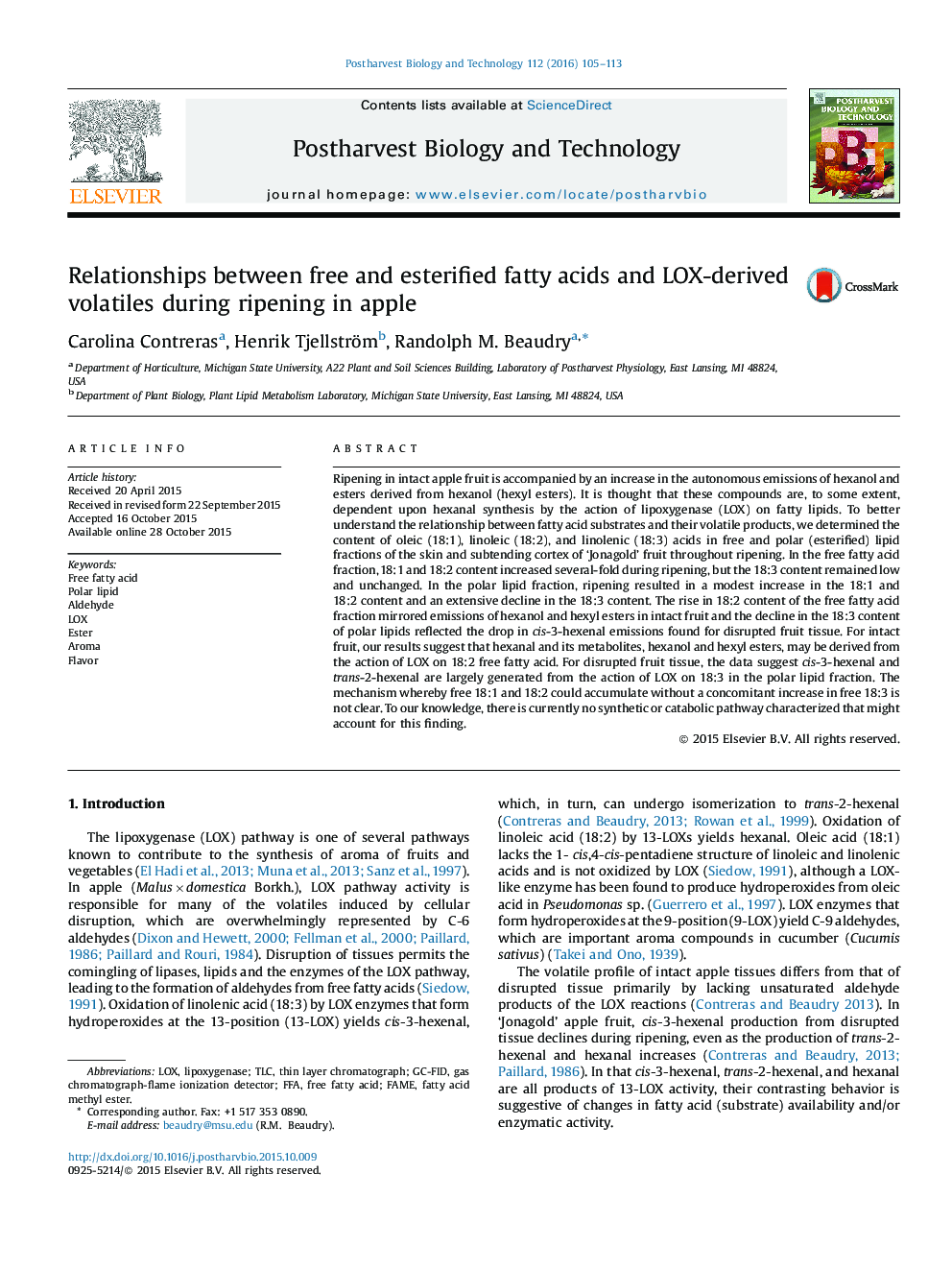| Article ID | Journal | Published Year | Pages | File Type |
|---|---|---|---|---|
| 4517928 | Postharvest Biology and Technology | 2016 | 9 Pages |
•The pool of free linoleic acid (18:2) in apple skin begins to increase at the onset of autocatalytic ethylene synthesis.•The content of free linoleic acid is highly correlated with hexanol and hexyl ester emissions.•In intact fruit, hexanal and its metabolites, hexanol and hexyl esters, may be derived from the action of lipoxygenase on 18:2 free fatty acid, rather than polar lipids.•The amount of linolenic acid (18:3) in polar lipids in apple skin declines following the onset of autocatalytic ethylene synthesis.•The decline in 18:3 during ripening correlates with formation of cis-3-hexenal in ripening apple.
Ripening in intact apple fruit is accompanied by an increase in the autonomous emissions of hexanol and esters derived from hexanol (hexyl esters). It is thought that these compounds are, to some extent, dependent upon hexanal synthesis by the action of lipoxygenase (LOX) on fatty lipids. To better understand the relationship between fatty acid substrates and their volatile products, we determined the content of oleic (18:1), linoleic (18:2), and linolenic (18:3) acids in free and polar (esterified) lipid fractions of the skin and subtending cortex of ‘Jonagold’ fruit throughout ripening. In the free fatty acid fraction, 18:1 and 18:2 content increased several-fold during ripening, but the 18:3 content remained low and unchanged. In the polar lipid fraction, ripening resulted in a modest increase in the 18:1 and 18:2 content and an extensive decline in the 18:3 content. The rise in 18:2 content of the free fatty acid fraction mirrored emissions of hexanol and hexyl esters in intact fruit and the decline in the 18:3 content of polar lipids reflected the drop in cis-3-hexenal emissions found for disrupted fruit tissue. For intact fruit, our results suggest that hexanal and its metabolites, hexanol and hexyl esters, may be derived from the action of LOX on 18:2 free fatty acid. For disrupted fruit tissue, the data suggest cis-3-hexenal and trans-2-hexenal are largely generated from the action of LOX on 18:3 in the polar lipid fraction. The mechanism whereby free 18:1 and 18:2 could accumulate without a concomitant increase in free 18:3 is not clear. To our knowledge, there is currently no synthetic or catabolic pathway characterized that might account for this finding.
